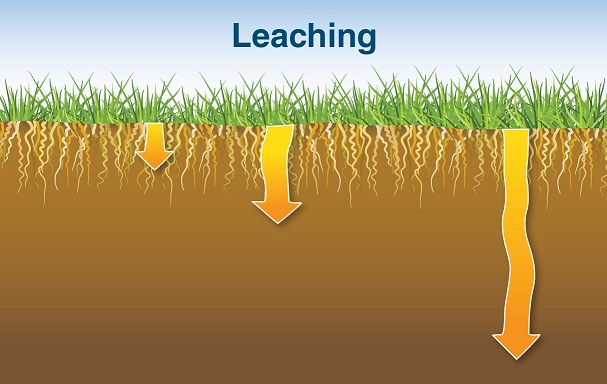Leaching refers to the loss of water-soluble plant nutrients or chemicals from the soil as water moves through the soil profile and into the vadose zone (saturated zone). Solute leaching becomes an environmental concern if it contributes these contaminants to groundwater or to surface waters where contaminated groundwater replenishes surface water bodies. Several variables influence the probability and rate of leaching, such as soil type and structure, vegetation, chemical properties, rate of precipitation, and depth to groundwater. When deciding on the rate and timing of fertilizer and pesticide application, it is critical to assess soil moisture status and potential for high infiltration in order to minimize potential losses. In addition, soil texture is a major influence on nutrient and pesticide leaching. For example, three to four times more nitrates have been shown to leach from a bentgrass sand fairway turf than from a sandy loam or silt loam soil (Petrovic 2004).
For more information on leaching see:

